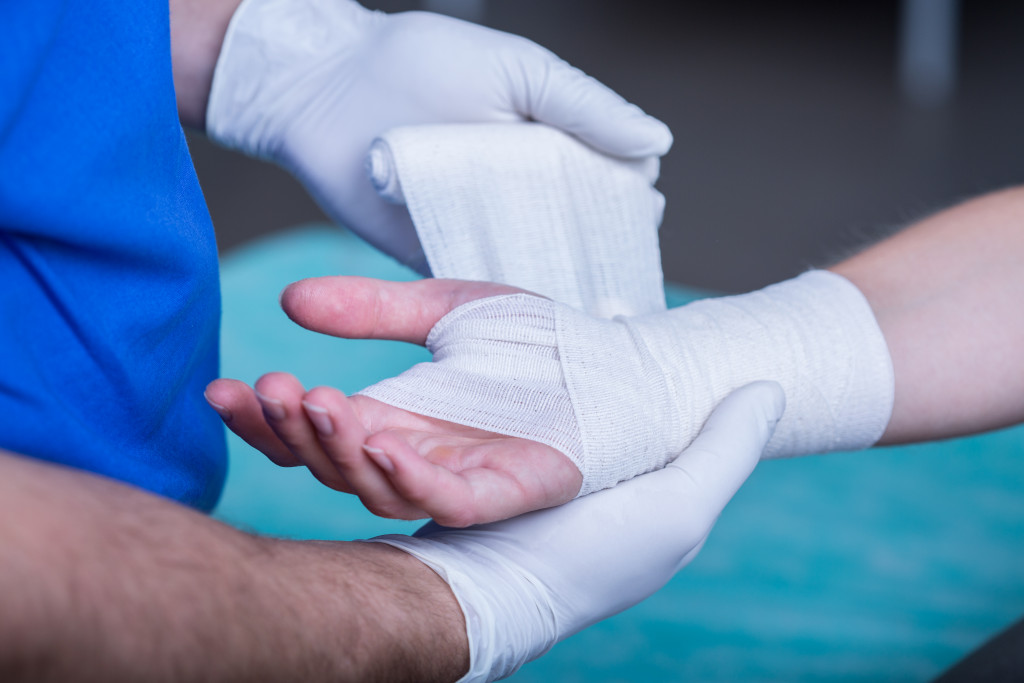- Begin your injury recovery with slow, steady exercises and modify your workouts to match your current physical state.
- Incorporate rest days into your routine to allow your body to repair damaged tissues and avoid burnout.
- Consult a trusted and experienced doctor who can provide accurate diagnosis, treatment plans, and preventive methods.
- Set realistic, attainable goals for your recovery journey, celebrate small victories, and practice patience.
Getting physically fit and healthy is a wonderful goal, but sometimes, an injury can prevent you from reaching it. Whether it’s a sprain, a strain, or something more serious, getting back into exercise after an injury can be daunting. Not only is there the fear of re-injury but there’s also the mental barrier of getting back into a routine. Fear not; this article will provide tips and advice on getting back into exercising after an injury so that you can get back on track toward your goal of being fit and healthy.
Take It Slow and Steady
The key to getting back into exercising after an injury is to take it slow and steady. Don’t jump right back into your normal routine immediately. Start small with light exercise, such as walking, gentle stretching, or swimming. Listen to your body, and stop if you feel any pain. Here are other practices that you can do:
Modify Your Workouts
Modifying your workouts doesn’t mean reducing their effectiveness. It’s about adapting exercises to your current physical state while keeping them impactful. For instance, if you’re returning from a knee injury, consider low-impact exercises or switch to upper-body workouts until your knee recovers fully. Always consult with a physical therapist or a trained professional who can guide you in modifying your routine.
Incorporate Rest Days
Don’t underestimate the importance of incorporating rest days into your recovery routine. During these periods, your body works to repair damaged tissues, allowing you to heal and grow stronger. Overworking can lead to other problems, including fatigue, decreased performance, and, potentially, re-injury. Remember, recovery is a part of the process, and rest days are crucial in maintaining your overall health and fitness while avoiding burnout.
Don’t Push Yourself Too Hard
Pushing your limits might seem like the quickest route to recovery, but it’s essential to understand that healing takes time. Listen to your body and be patient with your progress. If you’re feeling pain or discomfort during exercises, taking a step back is a clear signal. Remember, your recovery is a marathon, not a sprint. By not pushing yourself too hard, you are more likely to avoid setbacks, and your body will have the time to heal and strengthen gradually.

Look for a Good Doctor
Finding a reliable and experienced doctor is crucial in your recovery process. The right medical professional can provide you with accurate diagnosis, effective treatment plans, and valuable advice tailored to your specific needs and circumstances. Choose a doctor who has expertise in sports injuries, understands your fitness goals, and supports your journey toward a safe and healthy recovery. Here are some areas in the body that need special medical attention:
Knees
Knees are often the most vulnerable to injuries, especially in high-impact sports or activities. Dealing with a knee injury requires special care and attention. A trusted knee doctor treats your current issues and provides preventive methods to avoid future injuries. They can help design a personalized recovery plan, including physical therapy exercises and lifestyle changes, to ensure you return to your fitness routine safely and effectively.
Hips
Hips, like knees, bear a significant portion of body weight and are susceptible to injuries and strains, particularly in sports or activities requiring extensive movements. An experienced hip specialist can help manage the pain, swelling, or stiffness associated with hip injuries and guide you through a recovery plan tailored to your needs. This might involve a combination of medication, physical therapy, and sometimes, surgical interventions.
Hands
Hands are crucial for many exercise routines, and injuries to this area can significantly impact your fitness regimen. A professional hand specialist can provide targeted strategies for recovery, ranging from therapeutic exercises to surgical interventions, if necessary. They will also advise on modifications to your workout routines to prevent further damage while allowing you to maintain your fitness levels.

Set Realistic Goals
Setting realistic goals is a crucial part of recovery from an injury. Remember, your body is healing, so your initial performance may not be at par with your pre-injury levels.
Instead of aiming for record-breaking feats, focus on smaller, attainable goals. For example, you might start walking a certain distance or lifting a lighter weight, then gradually increasing as your body allows.
Celebrate these small victories – they signify progress in your recovery journey. Monitoring these mini milestones also provides a sense of accomplishment and motivates you. Don’t rush the process; slow and steady wins the race.
Recovering from an injury can be challenging for fitness enthusiasts, but with the tips in this blog post, you can overcome your fears and get back on track towards your goals. Remember to take it slow and steady, get professional advice, focus on strength and flexibility, set realistic goals, and stay positive. Listen to your body, and don’t forget that progress takes time.
